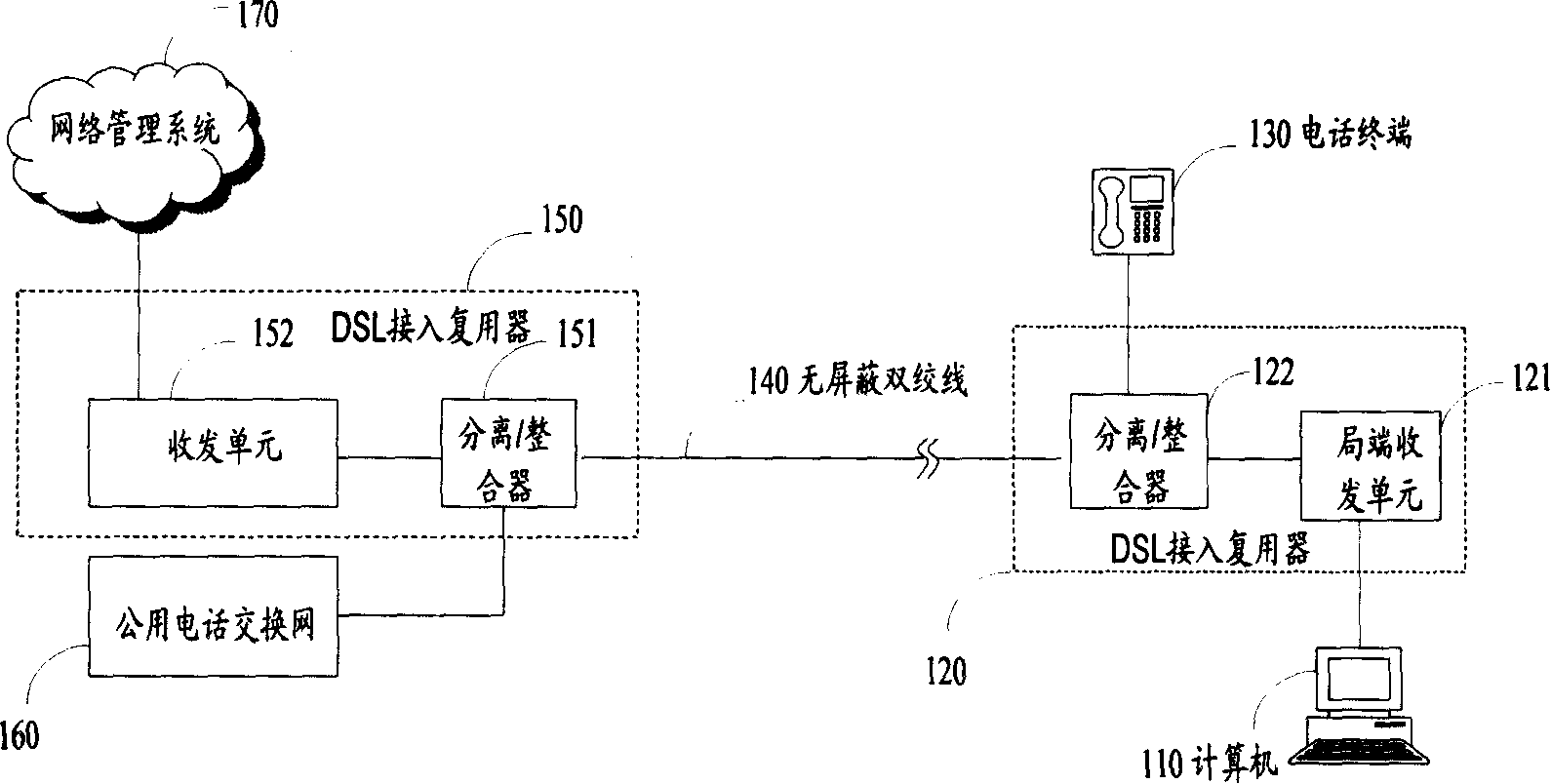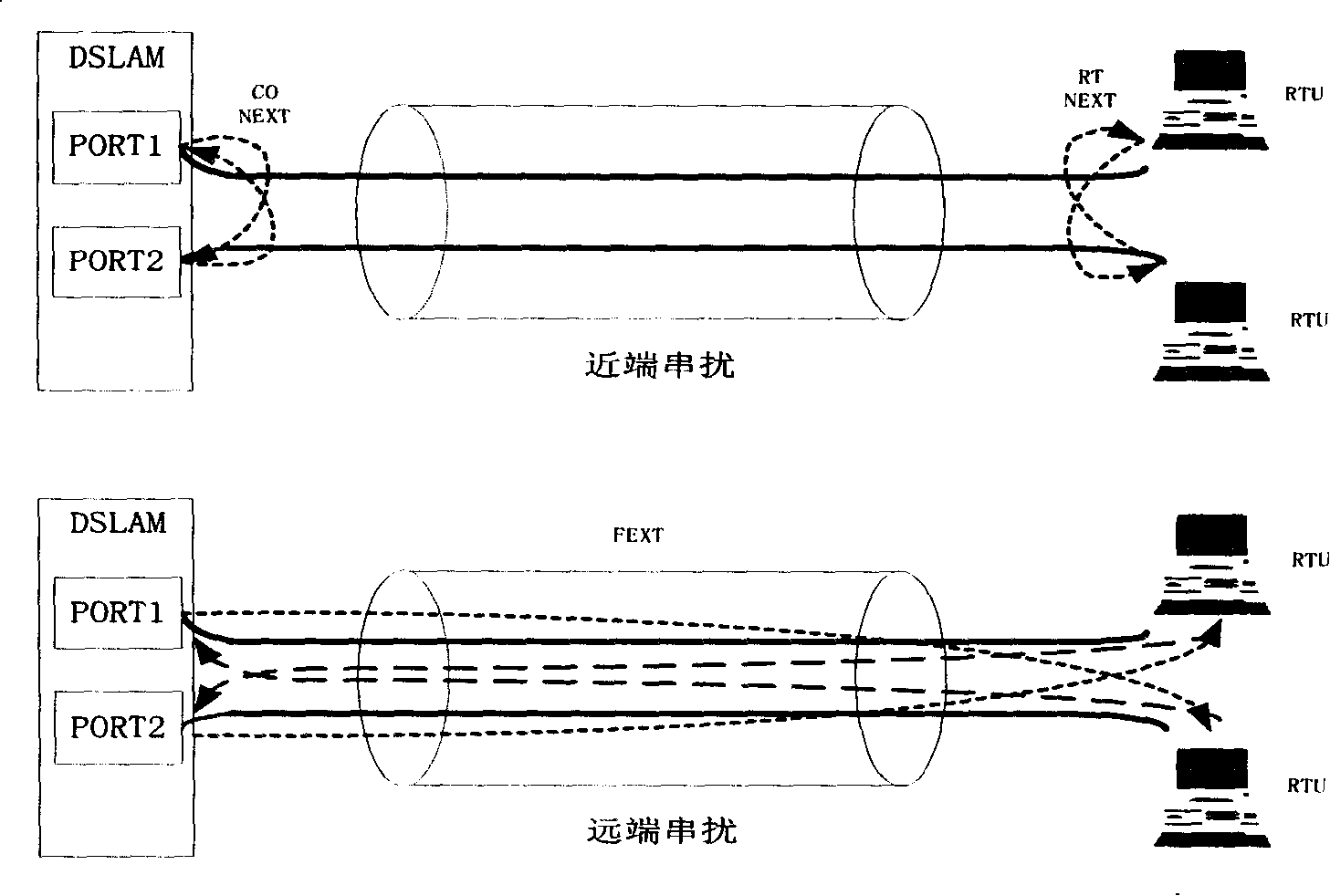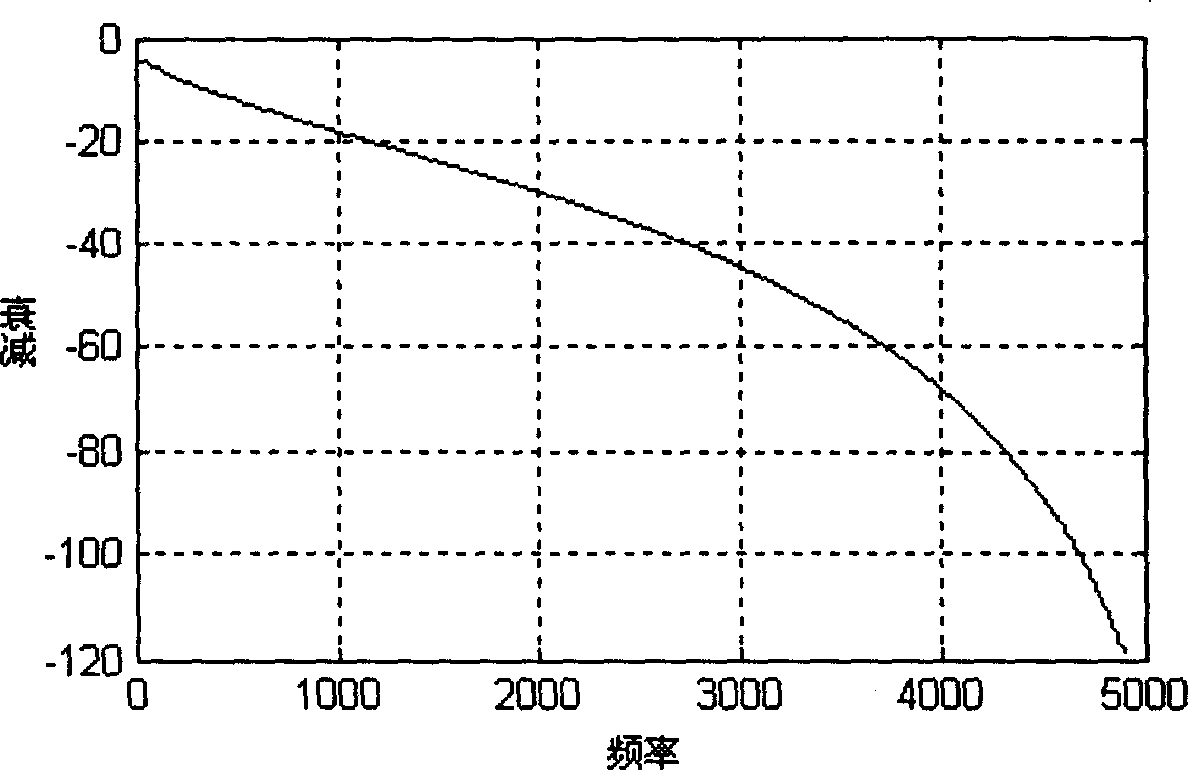A method for common transfer of multiple pairs and transmission terminal and receiving terminal
A technology of the receiving end and the sending end, which is applied in the direction of line transmission components, transmission systems, digital transmission systems, etc., can solve the problems of not being used, not satisfied, and wasting channel resources, so as to achieve performance improvement, lengthen signal transmission distance, and improve The effect of transfer rate
- Summary
- Abstract
- Description
- Claims
- Application Information
AI Technical Summary
Problems solved by technology
Method used
Image
Examples
Embodiment 1
[0076] According to the signal-to-noise ratio of each pair of lines, the frequency segment corresponding to the signal-to-noise ratio greater than or equal to 3dB is regarded as the frequency segment that meets the carrying condition, and the frequency segment corresponding to the signal-to-noise ratio less than 3dB is regarded as the frequency segment that does not meet the carrying condition, and the The sent information is divided into N+M (M is greater than or equal to 1) parts, wherein, the N parts of the sent information are respectively carried by frequency segments that meet the carrying conditions of N pairs of lines, that is, the N parts of the sent information are respectively carried by N pairs of lines Transmission, using the existing MIMO working method, and the remaining M parts of the transmission information are repeatedly carried by at least two frequency segments that do not meet the carrying conditions, that is, any part of the M parts of the transmission inf...
Embodiment 2
[0089] The schematic diagram of the principle of the sending end and the receiving end of this embodiment, such as Figure 13 shown.
[0090] The transmitting end includes a modulator group consisting of four modulators, a transmitter group consisting of four transmitters, an encoder group consisting of ten encoders and a selection combiner group, wherein the selection combiner The group includes a selector and a combiner group consisting of four combiners; the ten output terminals of the encoder group are respectively connected to the ten input terminals of the selector, and the four output terminals of the selector are respectively connected to the four combiner The input terminals are connected, the output terminals of the four combiners are respectively connected with the input terminals of the four modulators, and the output terminals of the four modulators are respectively connected with the input terminals of the four transmitters.
[0091] First, the encoder group enc...
PUM
 Login to View More
Login to View More Abstract
Description
Claims
Application Information
 Login to View More
Login to View More - R&D
- Intellectual Property
- Life Sciences
- Materials
- Tech Scout
- Unparalleled Data Quality
- Higher Quality Content
- 60% Fewer Hallucinations
Browse by: Latest US Patents, China's latest patents, Technical Efficacy Thesaurus, Application Domain, Technology Topic, Popular Technical Reports.
© 2025 PatSnap. All rights reserved.Legal|Privacy policy|Modern Slavery Act Transparency Statement|Sitemap|About US| Contact US: help@patsnap.com



